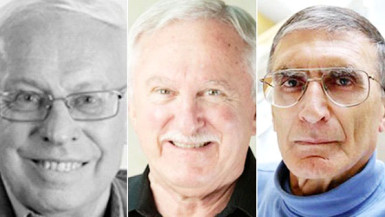STOCKHOLM/LONDON, (Reuters) – Three scientists from Sweden, the United States and Turkey won the 2015 Nobel Prize for Chemistry on Wednesday for working out how cells repair damaged DNA, providing new ammunition in the war on cancer.
Detailed understanding of DNA damage has helped drive a revolution in cancer treatment as researchers develop new drugs that target specific molecular pathways used by tumour cells to proliferate.

Tomas Lindahl, Paul Modrich and Aziz Sancar won the prize for “mechanistic studies of DNA repair”. Their work mapped how cells repair deoxyribonucleic acid (DNA) to prevent damaging errors from appearing in genetic information.
In many forms of cancer, one of more of these repair systems is broken.
“Their work has provided fundamental knowledge of how a living cell functions and is, for instance, used for the development of new cancer treatments,” the Royal Swedish Academy of Sciences said.
Thousands of alterations to a cell’s genome occur every day due to spontaneous changes and damage by radiation, free radicals and carcinogens – yet DNA remains astonishingly intact.
To keep genetic materials from disintegrating, a range of molecular systems monitor and repair DNA, in processes that the three award-winning scientists helped map out.
“It’s important for cancer prevention and cancer treatment. That is what I received it for,” Sancar, who has U.S. and Turkish citizenship and is a professor at the University of North Carolina, told Reuters by telephone from his home.
Sancar said he had been inundated by calls but his immediate plans were to shower, shave and go to his lab.
Modrich, a researcher at the Howard Hughes Medical Institute and Duke University School of Medicine in the United States, told Reuters he received the news while on vacation at his cabin in New Hampshire and was completely taken aback.
In fact, he did not get the word from Stockholm until around 8 am ET, more than two hours after the initial announcement.
Modrich, whose work led to an understanding and diagnostic tests for the most common form of hereditary colon cancer, has previously told how he was inspired by his biology teacher father, who said: “You should learn about this DNA stuff.”
That was in 1963, the year after the Nobel prize was awarded for the discovery of the structure of DNA.





